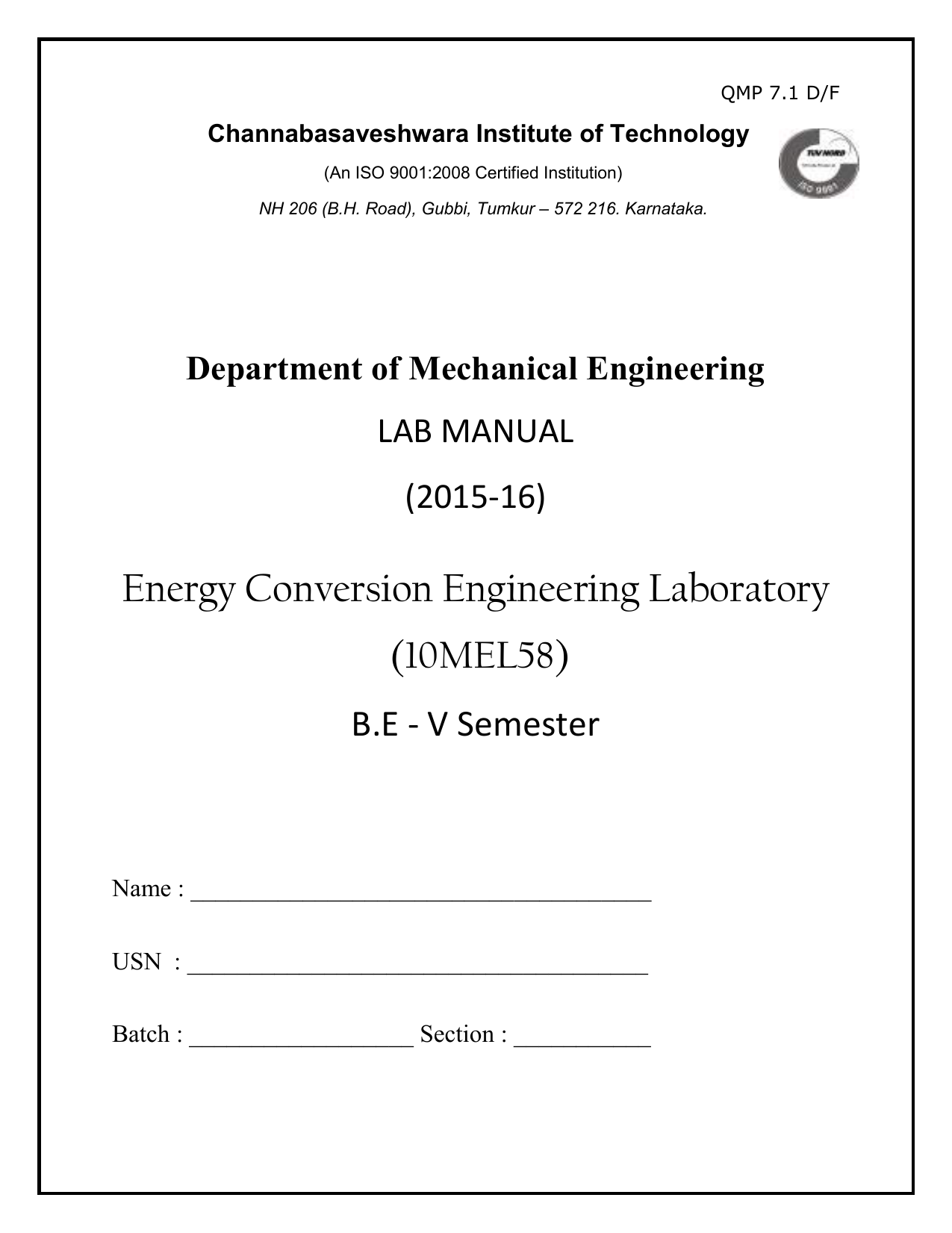Addressing the uncertain future of energy Improved efficiency of energy systems and development of sustainable, low-carbon-emission energy generation processes are essential for the long-term health of the environment. Recent increases in energy prices provide a graphic reminder of the importance of energy to our economy and our quality of life.
- Mechanical Engineering Review Manual
- Energy Conversion Lab Manual For Mechanical Engineering Students
Most of our endeavors — economic, social and societal — are fueled by a near-transparent infrastructure of relatively inexpensive, highly reliable and easily accessible energy. However, the traditional model — one based on plentiful, inexpensive fossil fuels — will not carry us past the middle of the century. In the Mechanical Engineering Department at Stanford University, we recognize that developing sustainable energy systems requires efforts in multiple disciplines and by large teams of faculty and students. It will require that we identify attractive fuel sources and that we develop the technologies required to use those sources in efficient, environmentally benign ways. Many ME faculty are focused on advanced energy carrier technologies and energy conversion devices such as fuel cells, hydrogen storage systems, hybrid transportation and power systems, as well as 'smart' ways of accomplishing chemical-to-work energy conversion. Energy faculty Faculty in the and Groups have a long tradition of experimental and simulation leadership for energy systems.
MECHANICAL ENGINEERING DEPARTMENT. LAB MANUAL SUBJECT: - ENERGY CONVERSION – II VII-SEMESTER LIST OF PRACTICAL 1. Trial on Twin cylinder reciprocating air compressor. Energy Science and Engineering. The Energy area focuses on technologies for efficient and clean energy conversion and utilization, aiming to meet the challenge of rising energy demands and prices, while simultaneously addressing the concomitant environmental impact. Institute of Aeronautical Engineering (IARE), Hyderabad was established in 2000. Mechanical and Civil) and six PG degree programs in M.Tech in engineering. Inside the classroom and laboratory environment and within their community. Mandatory Disclosure Anti Ragging Talent Transformation NAAC - IQAC. 2008 porsche cayenne s navigation manual.


Mechanical Engineering Review Manual

These efforts include a world-leading set of laboratories for the study of reacting flows and combustion processes including a massive engine laboratory and shock tube facility. Our laboratories also include facilities to study clean-coal energy conversion, thermoelectric energy conversion for waste-heat recovery, and fuel cell devices and systems. Our faculty are at the forefront of computational engineering of advanced energy conversion processes, and have led the way in the use of parallel computing and the development of strategies for handling multi-physics energy transport and conversion phenomena. These activities, as a group, provide compelling simulations and data for systems such as fuel cells, thermoelectrics, clean coal and high-efficiency gas turbine engines.
Energy Conversion Lab Manual For Mechanical Engineering Students
In the and Groups, faculty are studying the basic materials physics for novel energy conversion systems including solid oxide and PEM fuel cells. Multi-disciplinary solutions are required These developments will take place both within the traditional boundaries of mechanical engineering and at the boundaries where ME intersects with material science (such as membranes), electrical engineering (sensors, actuators and controls), biology (biosynthesis of fuels) and other fields. Our current, highly diverse approach to research positions us well to contribute to this rapidly changing landscape.